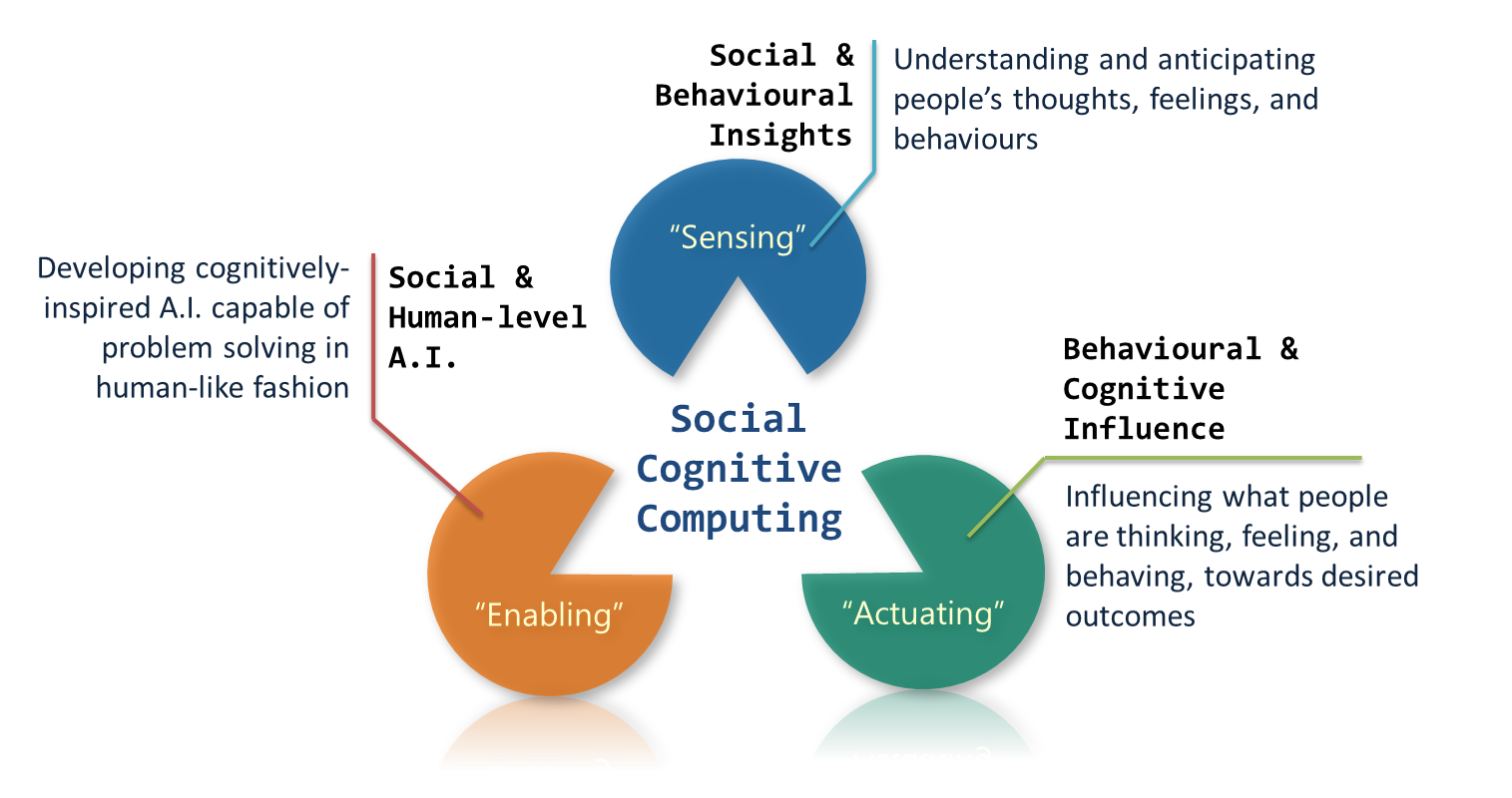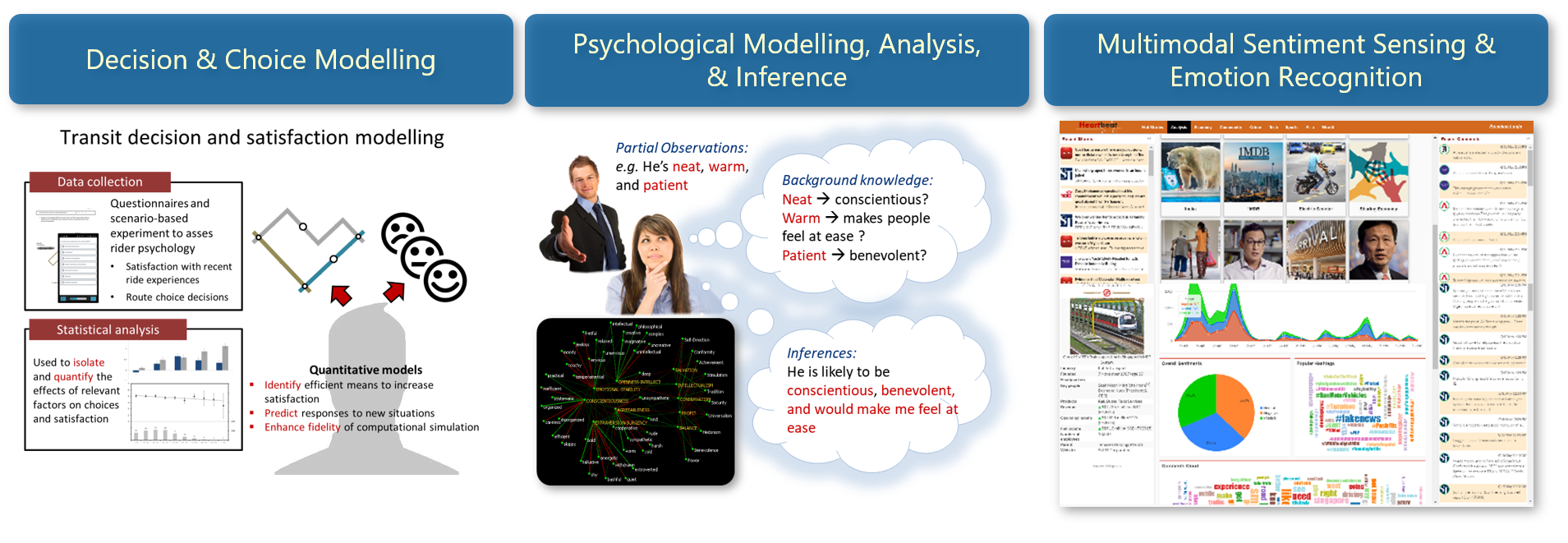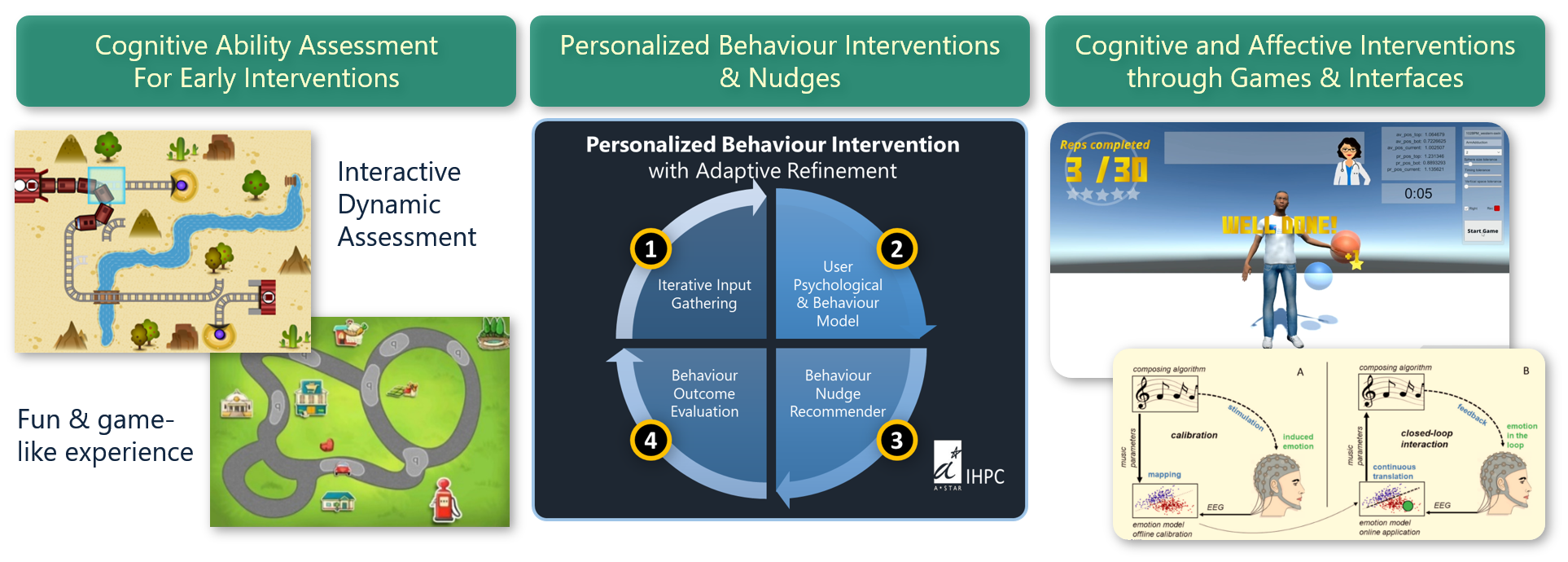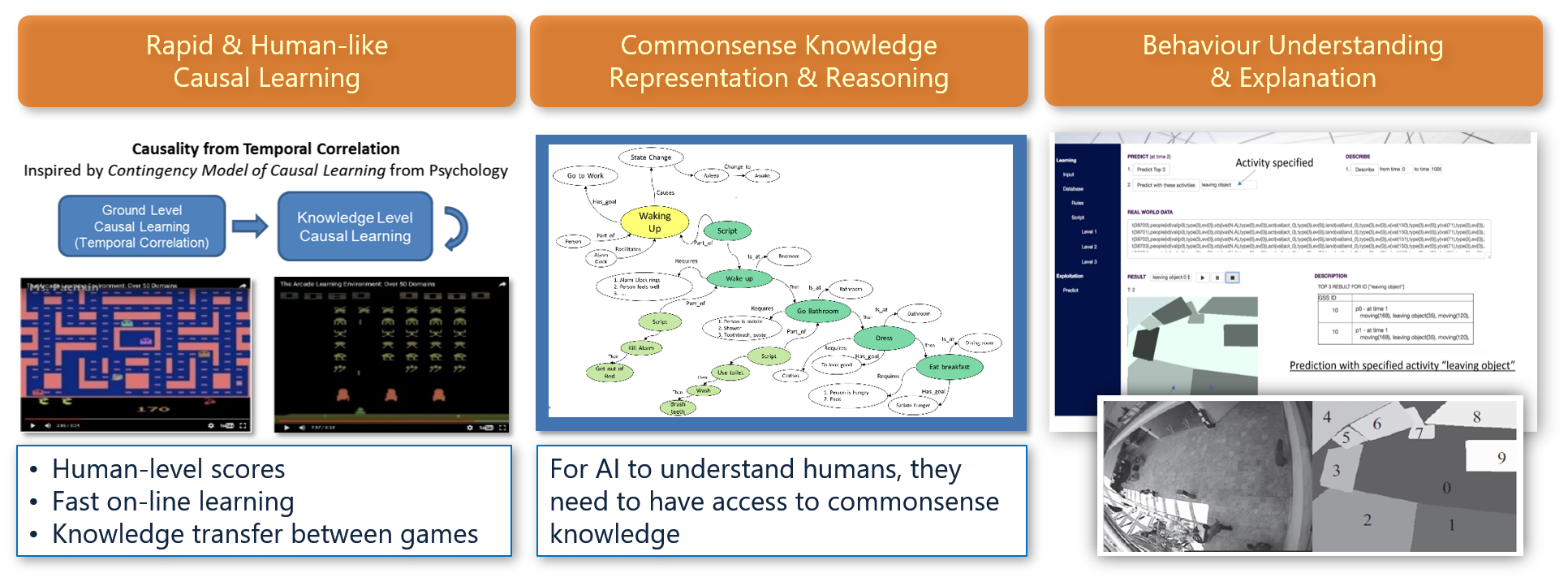Social & Cognitive Computing
IHPC seeks to solve real-world, human-centric issues that lie at the cross-disciplinary convergence of cognitive science, psychology, behavioural sciences, artificial intelligence, computational modelling & simulation.
Our goal is to endow artificial systems with the ability to observe, interpret, understand, and anticipate people’s behaviours, so that technology can work for, interact with, and serve people more effectively.
Our main approach is to construct computational models that incorporates theoretical knowledge in psychological, cognitive, & behaviour sciences, and develop algorithms that could reason about, and infer likely behavioural outcomes.

Social & Behavioural Insights
Social & Behavioural Insights is in short, all about understanding people’s thoughts, feelings, and actions. Here, we build models and tools that could help with the understanding and prediction of people’s choices and decisions. This also include tools that help users extract key insights about various sentiments and emotions present in different media, as well as analysing and modelling social networks from behavioural data to understand how information is spread or communicated.
Among some of the capabilities that have been developed include:
- Multimodal Sentiment Sensing and Emotion Recognition – This involves social listening and opinion gathering from social media to uncover people’s differing perceptions and quantifying outcomes of social media outreach. Our capabilities for sentiment and emotion recognition from text are particularly mature, and have seen good adoption by corporations. A distinguishing feature of these capabilities is its ability to understand and interpret uniquely Singaporean lingo – namely, Singlish. Not only that, these capabilities are capable of inferring specific emotion categories (e.g., joy, sadness, anger), and their relative intensities (such as how happy someone is), and even sarcasm contained within text, could be picked up! With these features, users of the technology can have a more accurate picture of how people are feeling.
- Psychological Modelling, Analysis and Inference – This involves understanding and reasoning about people’s innate psychological attributes and then anticipating their likely behaviours, even with scant information. When you meet someone for the first time, first impressions form quickly and without much thinking. People are able to do this because of their innate ability to process social information and observations, and situate those within their past experiences with people, to form an early expectation of how someone they’ve just met, is likely to behave. By emulating these cognitive mechanisms algorithmically, we thus develop capabilities that could do this. Many possible applications could then be enabled, for instance, Human Resource Management (e.g., recruitment, retention, development, and deployment – the R2D2s), Consumer Insights and Recommendations, Financial Behaviour Profiling, Mental Health and Wellness, and so on.
- Decision and Choice Modelling – This has to do with understanding individual and group decision-making processes that underlie behaviours, choices and preferences. As an example, consider the decisions people make on a daily basis about which transport mode to take, and which route to take. What kind of factors are important to different kinds of people? Would it be influenced by crowdedness, time of the day? Do people always make these decisions in a predictable manner? Here, our team of behaviour scientists would examine and interpret behavioural patterns and gather data from people to uncover these factors, first, to understand how decisions are made, and subsequently, to use these factors for constructing agent base simulations for transport planning purposes.

Behaviour & Cognitive Influence
With the social and behaviour insights that one could glean from people, the next focus area, Behaviour & Cognitive influence, is concerned with channelling those insights to enhance people’s lives. These include, for instance, promoting pro-health, pro-sustainability, or pro-social choices and decisions, such as eating healthily or making choices that are better for the environment. In addition, we leverage on a good understanding of cognitive processing mechanisms so as to develop novel solutions for better health and productivity outcomes.
Capabilities that are being developed under this area include:
- Cognitive Ability Assessment through Games and Gamification – The emphasis here is the development of implicit measures of cognitive task performance for early detection and intervention of cognitive decline. The use of games and gamification is intended to enhance people’s engagement and enjoyment. Besides the obvious application for healthcare, we are also applying these approaches for assessing work-readiness and fitness-for-duty, especially for cognitively-challenging tasks and risk-inherent vocations (e.g., operation of complex machinery, piloting aircraft and vessels, surgical operations, chemical plant monitoring).
- Personalized Behaviour Intervention and Nudges – Through identifying suitable behaviour change strategies and delivery mechanisms, we build capabilities to maximise the impact on positive, lasting attitudinal and behavioural changes, such as healthier eating habits and health outcomes.
- Cognitive and Affective Interventions through Games and Interfaces – Here we investigate cognitive processing mechanisms such as how people perceive different kinds of stimuli, and apply these to healthcare applications. For instance, by using the empirically-established facilitating effects of rhythmic entrainment, our team has developed games that makes use of musical rhythms to aid motor rehab in stroke patients (especially balance, reaching, and gripping movements) and strengthening in elderly. Similar approaches are also applied towards emotion regulation.

Social & Human-level AI
Capabilities that are being developed under this area are:
- Rapid and Human-like Causal Learning – These are a body of AI techniques for rapid and human-like learning, where the goal is not just to match or exceed humans in the performance of certain tasks, but also be able to learn to do so at human-level time-frames. As an example, a team of researchers here have developed an inductive causal learning algorithm that could learn to play ATARI games (e.g., Space Invaders), achieving human level performance (in terms of Hi-Scores) with only about the equivalent of 20 minutes of gameplay. The team is able to do this by endowing the algorithm with the ability to causally reason about events that occur in the game.
- Common-sense Knowledge Representation and Reasoning – Capturing, representing and reasoning about real-world observations with common-sense knowledge, should enable AI systems to perform human-like problem solving, or be able to reason about why people behave in certain ways.
- Behaviour Understanding and Explanation – The emphasis here is in developing artificial systems that intuit, understand, and explain why people behave in certain ways, in natural and human-like manner. Our team has so far, developed AI capabilities that could learn human behaviours from activity sequences (such as a sequence of activities that are detected from a video stream), and reason about the likely or anticipated future behaviours that have yet been observed. We are now deploying these capabilities for detecting anomalous behaviours (e.g., access control points), and even to assess behavioural competencies (such as situational awareness, teamwork, and effective communications).

A*STAR celebrates International Women's Day

From groundbreaking discoveries to cutting-edge research, our researchers are empowering the next generation of female science, technology, engineering and mathematics (STEM) leaders.
Get inspired by our #WomeninSTEM
.png?sfvrsn=ff199933_15)